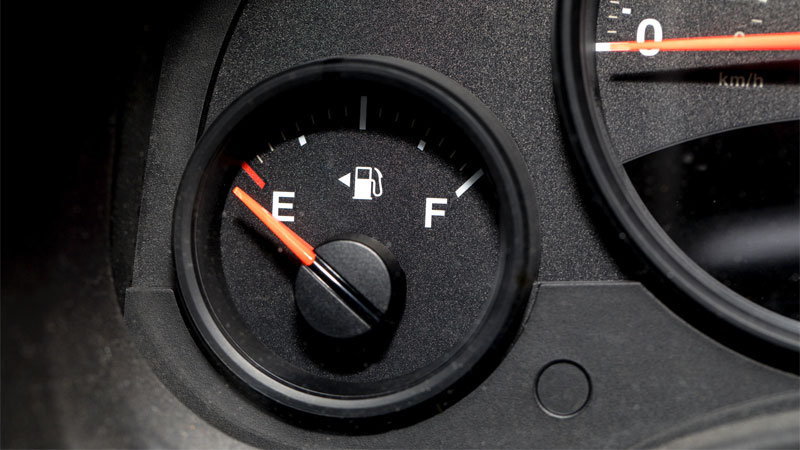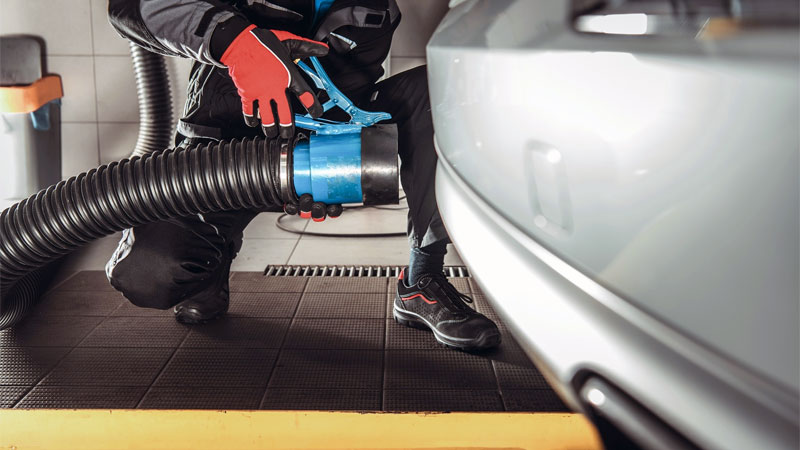Is a Manifold Oressure Sensor Easy to Replace
(Updated on July 28, 2022)
The MAP sensor, also known as the Manifold Absolute Pressure sensor, is a necessary component of your vehicle's fuel injection system. If the MAP were to go bad, you will likely know it.
As you may know, the intake manifold is responsible for distributing the air and fuel mixture from the internal combustion chamber into each cylinder. The MAP sensor helps the powertrain control module (PCM) figure out how much of the mixture should be injected into these cylinders.
That way, the engine's performance will continue running smoothly without any problems or setbacks.
See Also: Symptoms of a Bad MAF Sensor
What Does a MAP Sensor Do?
The MAP sensor can be found on most fuel injection engines made today. These are engines that use high pressure to pump gasoline which then vaporizes it.
What the MAP sensor does is it assists the engine in figuring out what it needs to have the best combustion possible. This is done by calculating how much air is entering the engine, the number of rotations in the engine per minute, and the temperature of the air.
Once this is all figured out, the electronic control unit of the engine calculates the air density within the fuel mixture. Based on this calculation, the electronic control unit will regulate the flow of fuel and the flow of air accordingly so that the best combustion possible can be performed.
Top 5 Bad MAP Sensor Symptoms
The MAP sensor should remain functional for a very long time. However, the time will eventually come when the MAP sensor does malfunction because of damage or wear. Once that happens, there will be one or more recognizable symptoms that will pop up and catch you by surprise.
If you don't replace the MAP sensor promptly, the symptoms will only get worse. Then you could be left with even bigger problems that will cost more money to fix. Here are five of the most common symptoms of a bad MAP sensor which you can easily recognize.
1) Low Fuel Economy

With a bad MAP sensor, you will be consuming a lot more gasoline than you normally do. This means that you'll be heading to the gas station more often and filling your tank with gas. As a result, you'll be spending more money on gasoline than you ever did before.
Although there are many reasons that result in poor fuel economy, consider one reason to be a bad MAP sensor.
See Also: 3 Reasons Your Fuel Gauge is Not Working
2) High Level of Emissions

If too much fuel is being injected into the cylinders, then it will cause more hydrocarbons to be released through the tailpipe and go into the environment. You won't even realize this is happening until you bring your vehicle for an emissions test.
Many states require car owners to get emissions testing every 1 to 2 years. If your vehicle fails the emissions test, then have a mechanic look at your vehicle to see if the MAP sensor is to blame.
3) Weak Engine Performance

A bad MAP sensor can cause a lot of strange symptoms. While worse fuel economy is one of those symptoms, sometimes better fuel economy is a symptom too. However, you will experience a much weaker engine in the process.
If a low amount of pressure in the intake manifold is wrongfully detected, the PCM will treat this as a smaller load for the engine. This will cause the engine to be injected with less fuel which results in slower acceleration than usual.
Once this happens, the engine won't be so powerful anymore. Meanwhile, you'll be putting higher demands on the engine than it can tolerate.
Read also: 5 Causes of Engine ECU Failure or Not Working Properly
4) Strong Fuel Smell

A bad MAP sensor will cause an improper amount of fuel and air to be mixed together in the combustion chamber. Sometimes there will be too much fuel mixed in there while other times, there will be too little fuel mixed in there.
This rich fuel mixture will result in your car smelling like gas inside (and outside) the car. It should be noticeable after the engine has been running for a couple of minutes.
5) Jerks/Hesitates When Accelerating

When you are driving your vehicle and stepping on the gas pedal, you may notice the vehicle jerking or hesitating as you accelerate or simply refuses to accelerate. In worse situations, the vehicle will die altogether if you continue to give it gas under these conditions.
The best thing to do is bring your vehicle into the auto shop as soon as you notice any kind of jerking or hesitating like this. You don't want to take the chance of it getting any worse because it could damage your engine or cause you to get stranded somewhere unpleasant.
How a MAP Sensor Works

The outer barometric pressure is similar to the intake manifold pressure when the engine is off. But when you turn on the engine, the interior of the intake manifold has a vacuum created there because of the pistons' pumping motion and the throttle plates creating more restriction.
If the engine is running and there is a fully open throttle, then there is virtually no vacuum pressure in the interior of the intake manifold. This causes the pressure in there to be the same as the outer barometric pressure.
The amount of barometric pressure could be anywhere from 28 inches of Mercury all the way to 31 inches. The exact amount is dependent on where you are located and the current conditions of the climate.
You will have lower air pressure in locations with higher elevations and higher air pressure in places with lower elevations. At sea level, the air pressure is about 14.7 pounds per square inch.
That vacuum that gets created in the interior of the intake manifold can have 0 to 22 inches of Mercury. Depending on the conditions of operation, this number could be higher.
An idle vacuum in the majority of cars will have between 16 and 20 inches of Mercury. You will have a vacuum at an even higher level if the throttle is closed while you're decelerating.
This happens because the pistons can't bring in more air through the closed throttle. This results in a much larger vacuum forming in the interior of the intake manifold, probably about 5 inches of Mercury higher.
When you accelerate and the throttle opens, large amounts of air are brought into the engine and the vacuum level falls all the way down to zero. As the throttle gradually closes, the vacuum gradually gets higher.
As you turn on the ignition key prior to the engine starting, the powertrain control module gets a reading of the MAP sensor. This tells the module what the barometric pressure is (also known as atmospheric pressure).
The powertrain control module takes this information into consideration when regulating the mixture of fuel and air. This comes in handy when the air pressure outside changes due to weather or location elevation.
You may have a vehicle that uses a BARO sensor to measure this while other vehicles use a BMAP sensor to measure both.
See Also: Symptoms of a Bad Knock Sensor
MAP Sensor Replacement Cost
Looking for Replacement Parts?
We recommend Parts Geek for the best prices and selection.

The cost of replacing the MAP sensor could be anywhere from $70 to $240. This includes the cost of labor which is from $30 to $60 and the cost of parts which is from $40 to $180. These numbers do not include any additional fees and taxes that you'll have to pay too.
The replacement job itself is very fast. The MAP sensor is located on or near the intake manifold. It is only fastened down by a clip or screw so it will be easy to take this off and replace the sensor. The mechanic will check the sensor and make sure it is operating properly.
Since it's a very simple job, replacing the MAP sensor on your own is possible for almost anyone.
Source: https://oards.com/bad-map-sensor-symptoms-replacement-cost/
0 Response to "Is a Manifold Oressure Sensor Easy to Replace"
Post a Comment